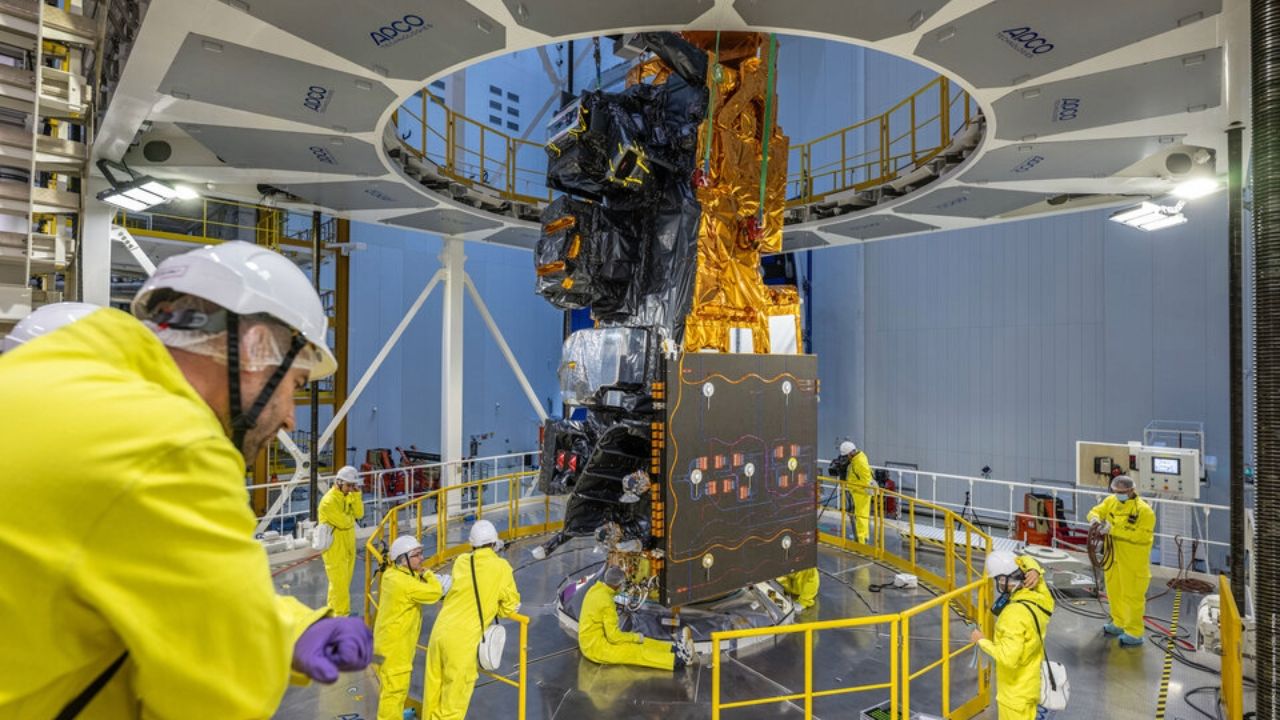The European Space Agency (ESA) has made significant progress towards the launch of its next-generation weather satellite, the MetOp-SG-A1. In early August 2025, the satellite was successfully encapsulated within the fairing of the Ariane 6 rocket at Europe’s Spaceport located in Kourou, French Guiana. This milestone brings ESA closer to enhancing global weather monitoring capabilities.
The MetOp-SG-A1 is equipped with advanced scientific instruments, including those designed for the Copernicus Sentinel-5 mission. These instruments will enable precise monitoring of Earth’s atmosphere, focusing on key variables such as air pollutants and greenhouse gases. This satellite is part of a two-satellite system, with the MetOp-SG-B1 planned for launch in the following year, further expanding ESA’s observational capabilities.
Next-Generation Launch Vehicle
The Ariane 6 represents a major advancement in Europe’s launch vehicle technology. It is designed to deliver increased flexibility and cost-effectiveness for various space missions. The rocket’s last flight took place on March 6, 2025, during which it successfully placed France’s CSO-3 reconnaissance satellite into orbit. The upcoming launch of the MetOp-SG-A1 will not only test the new rocket system but also contribute significantly to climate science.
The collaborative efforts behind the MetOp program aim to provide scientists and policymakers with crucial data to understand and address the challenges posed by climate change. By monitoring atmospheric conditions with unprecedented precision, ESA hopes to improve weather forecasting and climate modeling.
As the scheduled launch date approaches, anticipation builds within the scientific community. The successful deployment of the MetOp-SG-A1 will mark another step forward in ESA’s ongoing commitment to advancing our understanding of Earth’s climate and enhancing global environmental monitoring.
For more information about the Ariane 6 rocket and ESA’s weather satellite initiatives, further details can be accessed through official ESA channels.
